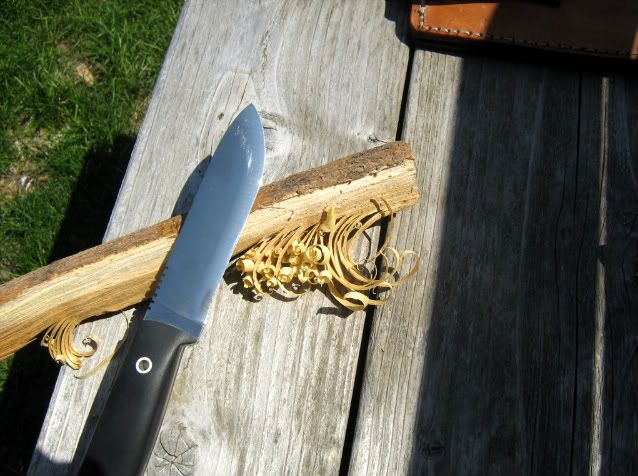- Joined
- Mar 29, 2007
- Messages
- 5,846
Every once in a while there's a thread about convex edges, and usually Scott and I chime in from our respective viewpoints, but there are aspects that seem to not get discussed much.
For example, I often have to explain the 3 types of convex edges I do after the fact- there's the full convex from the spine- a really elegant blade grind for thicker steel that's a very solid performer and my favorite for a heavy blade:

There's the convex final bevel- usually if I'm doing one- I'm doing it on a saber grind:

and the one I find hardest to describe, the 'scandi' style convex taper.

or

This one is hard to describe! it's not a saber grind, not a full convex, and not a scandi.
The other thing that seems to miss discussion a lot is one of the primary benefits of a convex edge - especially on large knives. A traditional leuku will often use the pattern where the very base of the blade has a steeper angle for power cuts, thinning out to the belly and thickening to a more obtuse angle again at the very tip. I have my own variation on this, and anyone who "gets into" convex edges can and should learn their preferred technique and angle variation.
I know we've all seen KSAs and other Survival Tools that have the very highly defined, sharply (as in fracture point) differentiated grind regions. I think the convex has the best organic flow to doing this and that the end result is a stronger and more adaptable blade.
For example, I often have to explain the 3 types of convex edges I do after the fact- there's the full convex from the spine- a really elegant blade grind for thicker steel that's a very solid performer and my favorite for a heavy blade:

There's the convex final bevel- usually if I'm doing one- I'm doing it on a saber grind:

and the one I find hardest to describe, the 'scandi' style convex taper.

or

This one is hard to describe! it's not a saber grind, not a full convex, and not a scandi.
The other thing that seems to miss discussion a lot is one of the primary benefits of a convex edge - especially on large knives. A traditional leuku will often use the pattern where the very base of the blade has a steeper angle for power cuts, thinning out to the belly and thickening to a more obtuse angle again at the very tip. I have my own variation on this, and anyone who "gets into" convex edges can and should learn their preferred technique and angle variation.
I know we've all seen KSAs and other Survival Tools that have the very highly defined, sharply (as in fracture point) differentiated grind regions. I think the convex has the best organic flow to doing this and that the end result is a stronger and more adaptable blade.













